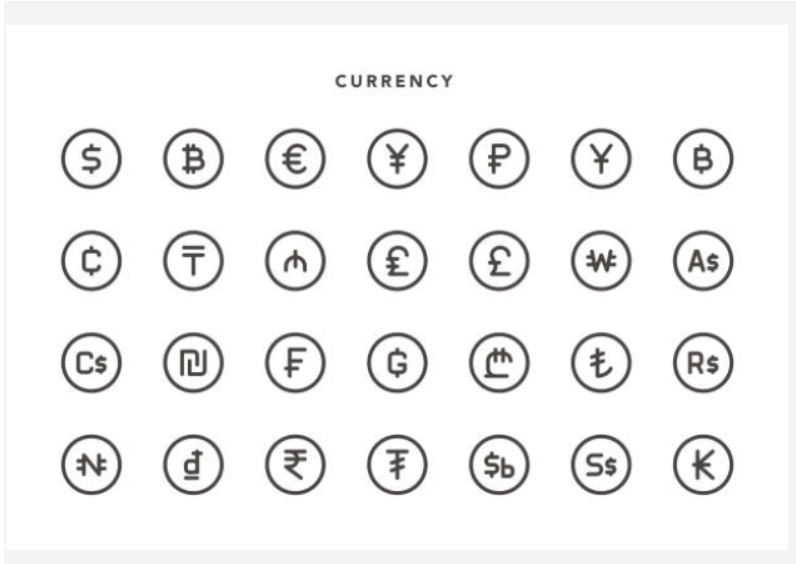
(A WEAK U.S. DOLLAR CREATES RIPPLE EFFECTS ACROSS THE WORLD)
December 11, 2023
Hello everyone,
Economic Calendar for the week ahead.
Monday December 11, 2023
Australia Consumer Confidence change
Previous: 2.6%
Time: 6.30 pm ET
Tuesday, December 12, 2023
US Core Inflation Rate
Previous: 4.0%
Time: 8:30 am ET
Wednesday, December 13, 2023
US Interest Rate Decision
Previous: 5.5%
Time: 2:00 pm ET
Thursday December 14, 2023
ECB Interest Rate Decision
Previous: 4.5%
Time 8:15 am ET
Friday December 15, 2023
EA Manufacturing PMI
Previous: 44.2
Time: 4:00 am ET
A weak U.S. dollar has ramifications for investors across the world.
The dollar index measures the US dollar’s value against a basket of six key currencies: the euro, the Japanese yen, the pound sterling, the Canadian dollar, the Swedish krona, and the Swiss franc.
The dollar normally rises when the US Federal Reserve raises interest rates (which it has been doing over the past 18 months) as overseas investors flock to US bonds because of the higher yields that they offer. Now the greenback is overvalued. The US dollar could still rise for the next few months, but by this time next year, it will be lower than where it is now.
As the US dollar is the world’s reserve currency, it is important for a lot of financial products.
So, if it weakens, how does it affect these products?
Commodities
Assets that are denominated in US dollars should do well if the dollar weakens. In other words, if the denominator gets smaller, the price goes higher. A weak US dollar makes dollar-denominated assets cheaper to buy with other currencies.
This should make commodities attractive: all the main raw materials are priced in US dollars, except for cocoa, which is priced in sterling. You could play this through a broad commodity exchange-traded fund (ETF) such as the Wisdom-Tree Enhanced Commodity ETF.
Within commodities, gold is likely to be the biggest winner – it hit a record high of over $2,100 last week, at which point it had climbed 16% in the space of two months.
Gold is benefiting from several different trends: US dollar weakness, central banks buying bullion, expectations that real interest rates will fall, and geopolitical turmoil. If an investor expects the US dollar to weaken then gold is a good asset in which to take a position.
Consider the iShares Physical Gold exchange-traded commodity (ETC) or the Invesco Physical Gold ETC.
Emerging Markets
Historically, when the dollar has been strong, the stock markets of emerging countries have performed worse than developed markets. These periods occurred between 1995 and 2000, and 2012 and 2015.
By contrast, emerging market equities performed well between 2003 and 2007, 2009 and 2012, and 2017 and 2018 – periods when the dollar was weak.
The reason is that many developing nations borrow in US dollars, so weakness in their currency relative to the dollar means it’s more expensive to afford the interest on that debt and to repay their loans.
The opposite is also true; if the dollar is weak relative to their currency, it is cheaper for them to borrow and service their debts.
You could consider a cheap index-tracking fund to take advantage of this, such as the iShares Core MSCI EM IMI ETF or the Fidelity Index Emerging Markets fund.
How does a weak dollar influence the movement of stocks?
When the dollar is weakening it tends to mean that global economic growth and, consequently, risk appetite are strong. This can be positive for equities.
A weaker dollar means that it’s cheaper for non-US companies with US supply chains to import goods. It also means that US exporters’ goods and services are cheaper for overseas customers to buy.
But a weaker dollar can also have a negative impact on companies that sell a lot of goods and services to Americans because those US earnings become worth less when converted back to their base currency.
If you own shares in an ETF that tracks the performance of America’s S&P 500, a weak dollar relative to the pound, for example, will affect your returns.
In the long term, these peaks and troughs tend to even out. In the past five years, the Vanguard S&P500 ETF is up 81.5% in US dollar terms and has gained 83.3% in sterling terms.


